Southerndown is one of the best examples in southern England/Wales of a golf course on what’s called ‘downland,’ land with chalk beneath the topsoil. While much of the land in the UK sits on limestone, Southerndown is unusual in that it has a layer of acidic soil over the alkaline chalk, which means that the course has the benefit of good drainage from the porous chalk. It also means that the site is poor for farmland (most crops like alkaline topsoil) but good for some of the plants that we associate with the impoverished soils of heathlands and links, especially gorse. Of every course that I played in the UK, no course had healthier and more abundant gorse than Southerndown.
So even though it’s surrounded by farmland and covered with grazing animals (Southerndown has the most sheep of any course that I saw), Southerndown plays like a links course. It’s treeless, firm, and surrounded by the thickest gorse that I’ve seen on any course. Although Southerndown isn’t as well-known as its Welsh neighbors Royal Porthcawl and Pennard, I found it to be one of the strongest tests of golf in western England/Wales. The ubiquitous gorse combined with the wind and one of the more interesting sets of greens that I saw in my British golf travels make this course a consistent challenge. While it lacks a bit in hole variety relative to the best courses, it’s a course that I’d be happy to play on a regular basis.
The 365 yard par 4 first hole at Southerndown is reminiscent of its quirky Cotswold neighbors to the east Cleeve Hill and Painswick in that it climbs about 70 ft. from tee to green. It’s pretty wide open so it’s a good test of how solidly you can hit the ball. Hit one a bit weak off the heel and it becomes a par 5.
So even though it’s surrounded by farmland and covered with grazing animals (Southerndown has the most sheep of any course that I saw), Southerndown plays like a links course. It’s treeless, firm, and surrounded by the thickest gorse that I’ve seen on any course. Although Southerndown isn’t as well-known as its Welsh neighbors Royal Porthcawl and Pennard, I found it to be one of the strongest tests of golf in western England/Wales. The ubiquitous gorse combined with the wind and one of the more interesting sets of greens that I saw in my British golf travels make this course a consistent challenge. While it lacks a bit in hole variety relative to the best courses, it’s a course that I’d be happy to play on a regular basis.
The 365 yard par 4 first hole at Southerndown is reminiscent of its quirky Cotswold neighbors to the east Cleeve Hill and Painswick in that it climbs about 70 ft. from tee to green. It’s pretty wide open so it’s a good test of how solidly you can hit the ball. Hit one a bit weak off the heel and it becomes a par 5.
The long par 4 second was one of my favorite holes in the UK. While there’s a teeing ground near the first green, I’d recommend walking another 50 yards and playing the back tee. The creates the disconcerting, uphill shot that we see in the first photo. While the shot is intimidating, it isn’t so difficult because the fairway is very wide.
The best angle of approach is from the center of the fairway because while there are three bunkers between you and the green from here, they’re well short. Although you can’t see it, the green is open from this angle, with bunkers up the right side on the final approach. I love the simple, lay-of-the-land green and it’s hard to beat the surroundings, looking off over the estuary toward Royal Porthcawl and Swansea.
We’ll encounter a lot of holes like the third in the rest of the round: a medium length par 4 (~400 yards) with several fairway and greenside bunkers. This hole climbs over 50 ft. from tee to green so again, there’s a premium on hitting the ball solidly.
Four is similar to three, but plays downhill and is much easier. The two primary difficulties here are (1) the blind drive over gorse and (2) that the back-right of the green is protected by a mound. This wasn’t an issue for us on this day because the pin was left-center.
The par 3 fifth is probably the most photographed hole at Southerndown and is an excellent 180 yard par 3 with a bit of a redan green. The main thing here is that you don’t want to miss left because the ball will run down the hill.
Six is a very short (460) par 5 but very difficult driving hole, with three bunkers in the middle of the fairway 210-250 from the tee. It was playing down a pretty good wind on this day so after avoiding those bunkers, the main challenge was in holding the green over pot bunkers at the front right. If you had carried the left side of the fairway bunkers, you’d have a more open angle into the green.
Seven is one of the other most-photographed holes at Southerndown and is surely one of the UK’s great long par 3s. There are bunkers close to the green at both the front-right and left, placing an extremely high demand on accuracy for such a long (220 yards) hole. Probably the best thing to do here is underclub and hope that the ground carries the ball to the front of the green.
Eight is another tough mid-length par 4, with bunkers on both sides of the fairway about 270 yards out. The green is protected by hard-to-see bunkers left and right and had some of the most interesting contours of any on the course. Apparently there are several sets of additional tees further back that allow this hole to be stretched to 545—but you could stick a mid-length par 3 between the seventh green and those tees.
Although the par 4 ninth is a bit shorter (just under 350), the bunker scheme is even heavier here, with 3 around the fairway and 4 around the green. The hole played into the wind, so it was difficult to reach the right fairway bunker, 255 from the tee. There’s endless room to the right in the form of the eleventh fairway but the further right that you go, the blinder that your approach becomes over gorse.
The tenth is an excellent medium-short par 3 with a green that pitches steeply from right to left and is shared with the sixteenth green in the back.
I found the next three holes to be a bit of a slog. The eleventh is 410 and was downwind, but there are bunkers in the middle of the fairway at 275 yards, which made it a tough drive. It’s best to place your drive up the left side here as the green angles from front-left to back-right…but that’s also where all the gorse is.
Twelve was just brutal with the wind into and from the left. I aimed my drive over the edge of the gorse on the left and ended up at the edge of the gorse on the right. While this would be a much easier drive without the wind (probably not too common here), there are still fairway bunkers right and left 230 and 250 out. From the 435 yard back tee (not even listed on the card), you’d probably be better off playing back down the eleventh fairway.
The short par 5 thirteenth played straight downwind and like the sixth, is another intimidating driving hole with three bunkers up the left side 240-295 from the medal tees. The further that you go, the more that the worst encroaches from the right. The approach is fairly open with the standard left and right bunkers.
The fourteenth is another excellent par 3 with one of the most unusual but excellent greens that I saw anywhere in the UK. It’s about 50 yards deep and hourglass shaped, being pinched by bunkers in the middle. The back of the green is tougher to hit, but the front has the wildest contours. Although the long holes get a little redundant, Southerndown’s par 3s are world class.
The 365 yard fifteenth is probably the most comfortable driving hole on the course, although there is gorse on the left starting at 240 if you pull it. The yardage guide mentions that Harry Colt had a hand in designing this course and I bet that this hole—with its diagonal line of bunkers 25 yards short of the green—was one of his.
After a few minutes wandering around in the gorse trying to find it, we came to the sixteenth, another difficult, into-the-wind 400 yard par 4. This one is also uphill and played very long. Fortunately, there’s a bit more room off the tee. But the approach is very difficult, with a bunker 30 yards short-left of the green, very near where you’d want to land a run-up shot. Because of this bunker, it’s best to play your drive up the right side of the fairway so that it isn’t in your line and you’re playing your approach into the slope.
Seventeen is not a difficult driving hole, although mounds and rough encroach from the left. It was downwind, so I laid up and still had just a wedge to the green. The green is open in front and has just one bunker to its left. It was nice to have an easier hole after what had been a very difficult back nine to this point.
Eighteen is an oddity: it has a two-tiered fairway with a high-left and low-right side, just like the seventeenth at Pennard (although visible from the tee in this case). A lot of people seem to like this hole and the yardage guide calls it the signature hole, but it wasn’t nearly my favorite on the course.
I suppose that the view of the green is a bit better from the left side but the further you hit it, the more room that there is right than left. Probably the best thing to do is bomb away over the ridge and hope that your ball doesn’t get stuck on it (it shouldn’t).
I suppose that the view of the green is a bit better from the left side but the further you hit it, the more room that there is right than left. Probably the best thing to do is bomb away over the ridge and hope that your ball doesn’t get stuck on it (it shouldn’t).
Because of the wind, narrowness, and gorse, I found Southerndown to be one of the most mentally taxing courses that I’ve played. It’s very demanding off the tee. The yardage guide is essential here because the bunkers tend not to be built up and many are not visible, especially off the tee. But it’s an excellent test of golf for good golfers. I played a combination of the white and yellow tees so the course probably only played about 6,200 and to par 70, but that was plenty enough. From the tips, the course stretches to 6,650 yards and the three longest holes play downwind, so it’d be par 68 for tournament golf. I’m not sure that I’ve seen a more difficult course than that one would be.
While the spring and early summer of 2016 were fairly wet in southern England and Wales and the ground was playing like a parkland course, Google Earth shows the course pretty baked out. I can’t imagine playing it on a windy day in those conditions. There isn’t enough room here for both wind and peak links firmness. If you play it in those conditions, you’ll have to adapt your game like Tiger did in the 2006 Open at Hoylake, clubbing down off the tee and playing for substantial runout. Like Rye and probably a few other links courses, you face the ‘Links Trilemma’ at Southerndown in which you can only ever have two of the three: wind, firmness, and hitting your driver.
In short, Southerndown is an excellent test of golf. The lack of variety in the bunker schemes and the modest terrain probably keep it out of the top tier of courses that I played in England and Wales, but there are several outstanding holes, especially the long par 4 second and the par 3s. I’d love to be a member at a course like this because from top to bottom (both in terms of clubs and parts of your body…), it gives your game a thorough workout. It’s like a golf boot camp.
While the spring and early summer of 2016 were fairly wet in southern England and Wales and the ground was playing like a parkland course, Google Earth shows the course pretty baked out. I can’t imagine playing it on a windy day in those conditions. There isn’t enough room here for both wind and peak links firmness. If you play it in those conditions, you’ll have to adapt your game like Tiger did in the 2006 Open at Hoylake, clubbing down off the tee and playing for substantial runout. Like Rye and probably a few other links courses, you face the ‘Links Trilemma’ at Southerndown in which you can only ever have two of the three: wind, firmness, and hitting your driver.
In short, Southerndown is an excellent test of golf. The lack of variety in the bunker schemes and the modest terrain probably keep it out of the top tier of courses that I played in England and Wales, but there are several outstanding holes, especially the long par 4 second and the par 3s. I’d love to be a member at a course like this because from top to bottom (both in terms of clubs and parts of your body…), it gives your game a thorough workout. It’s like a golf boot camp.
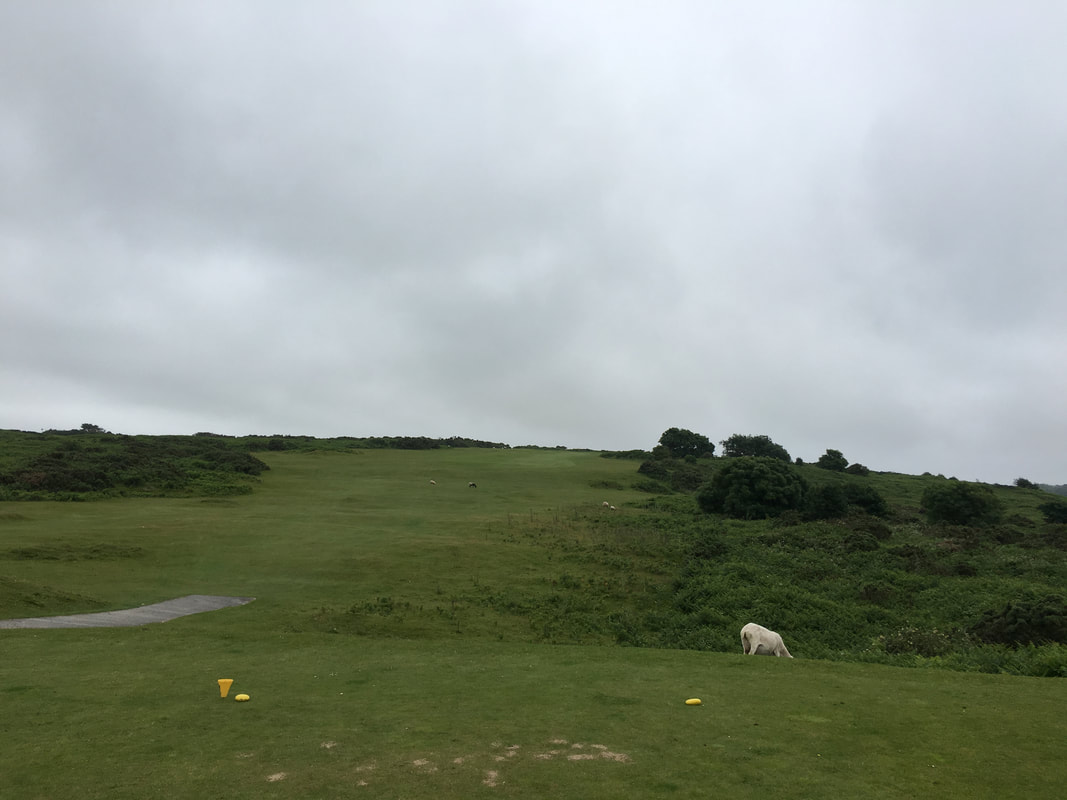
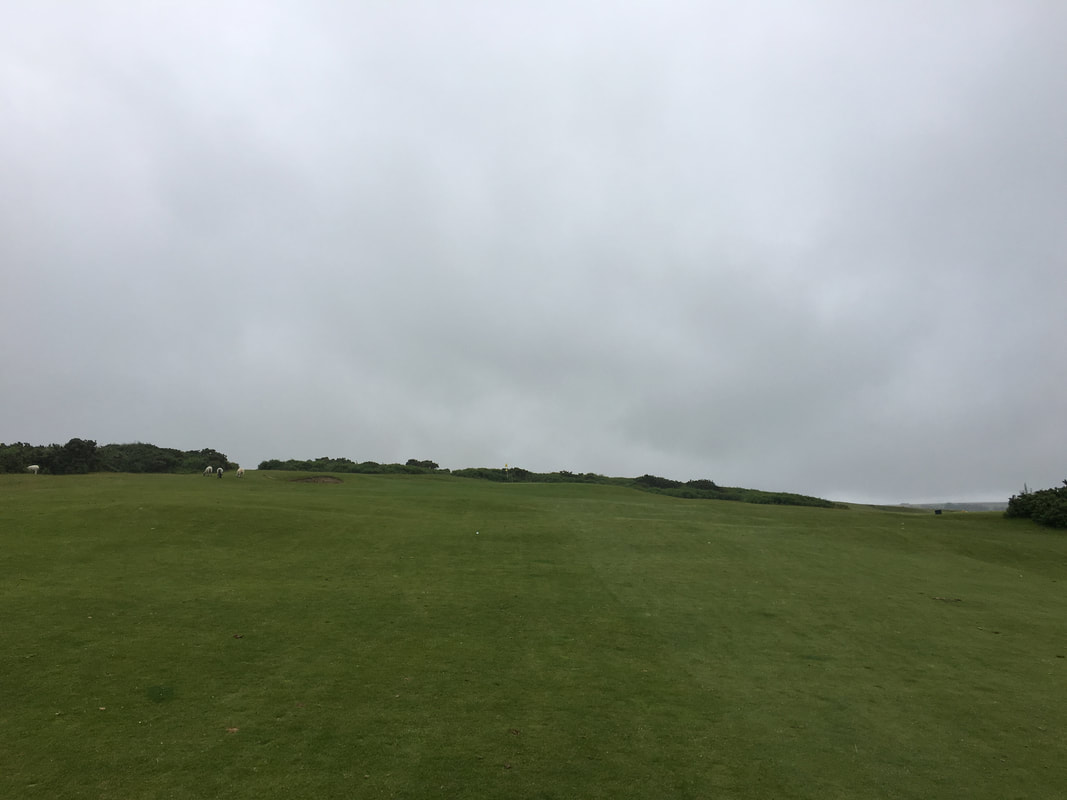
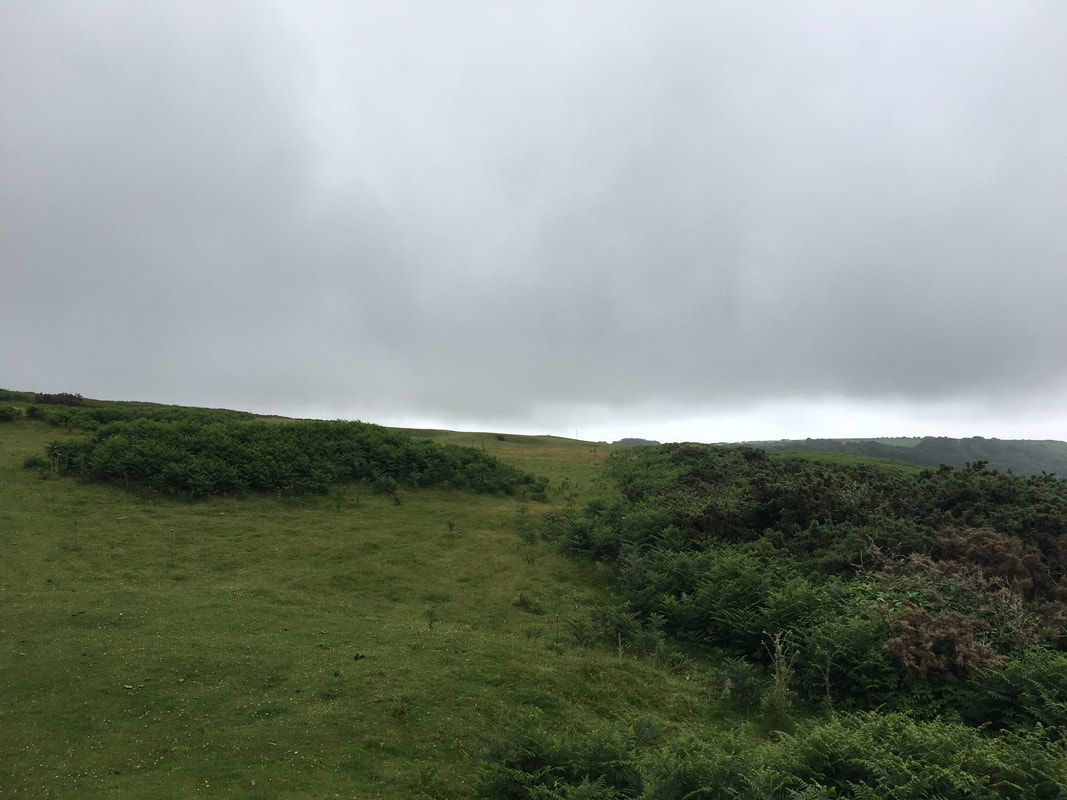
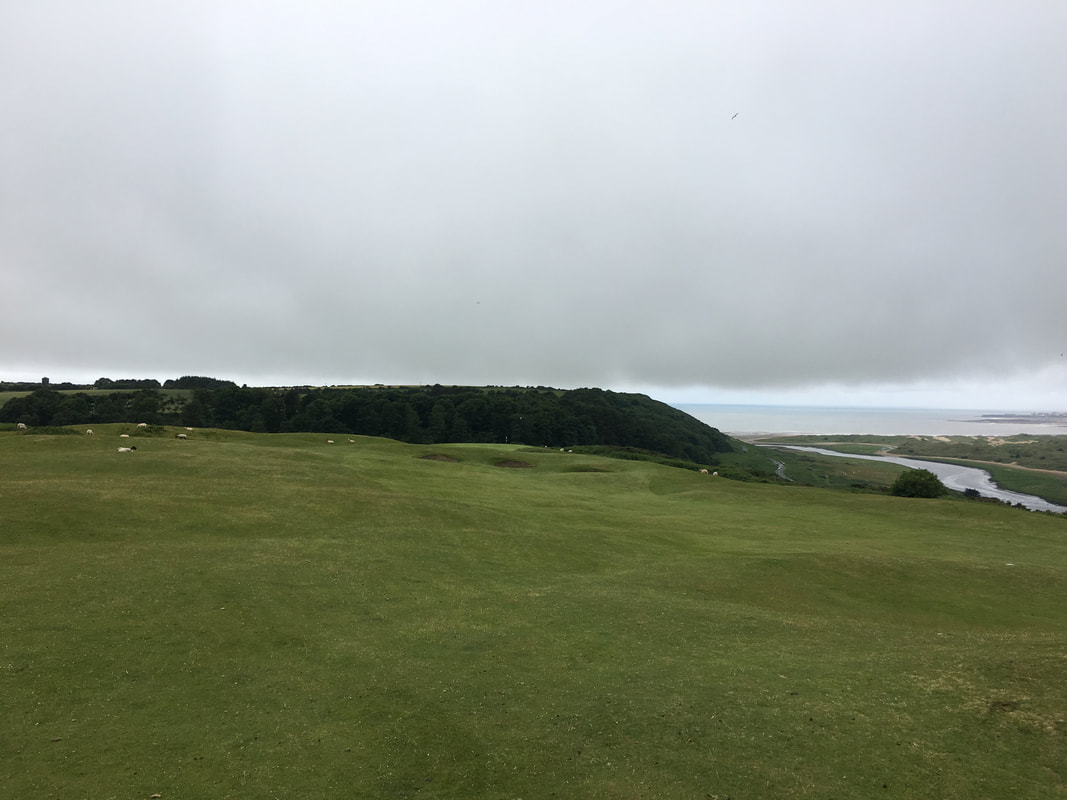
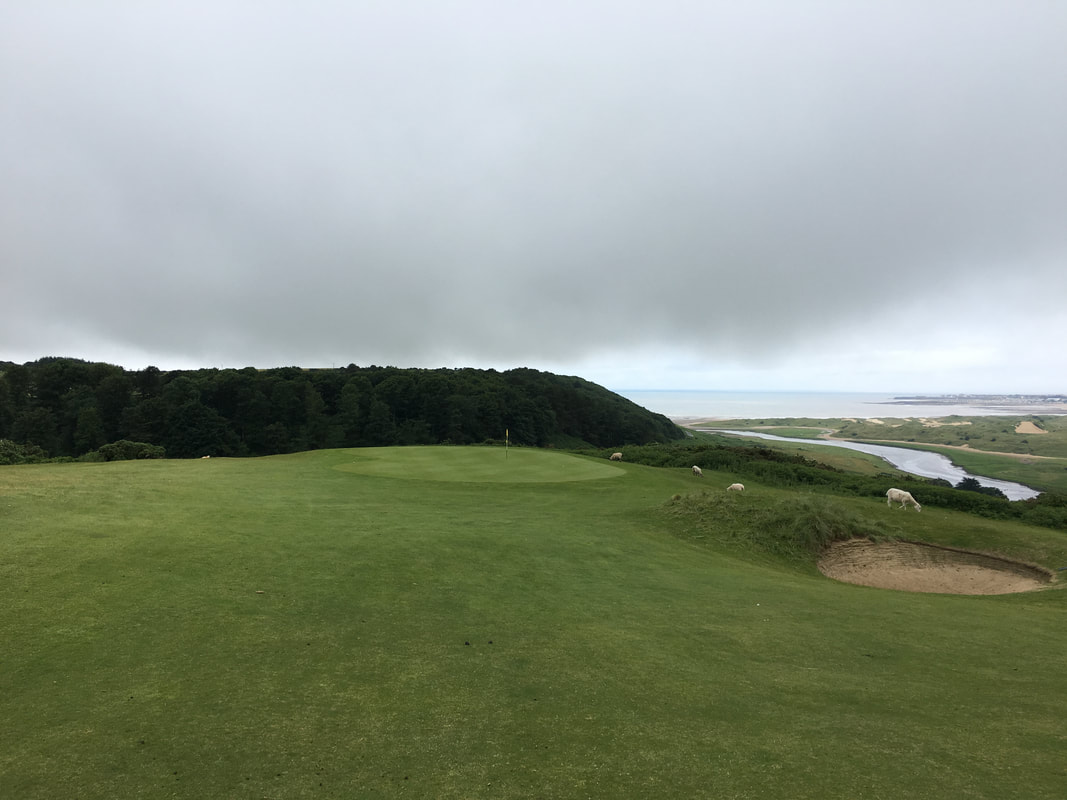
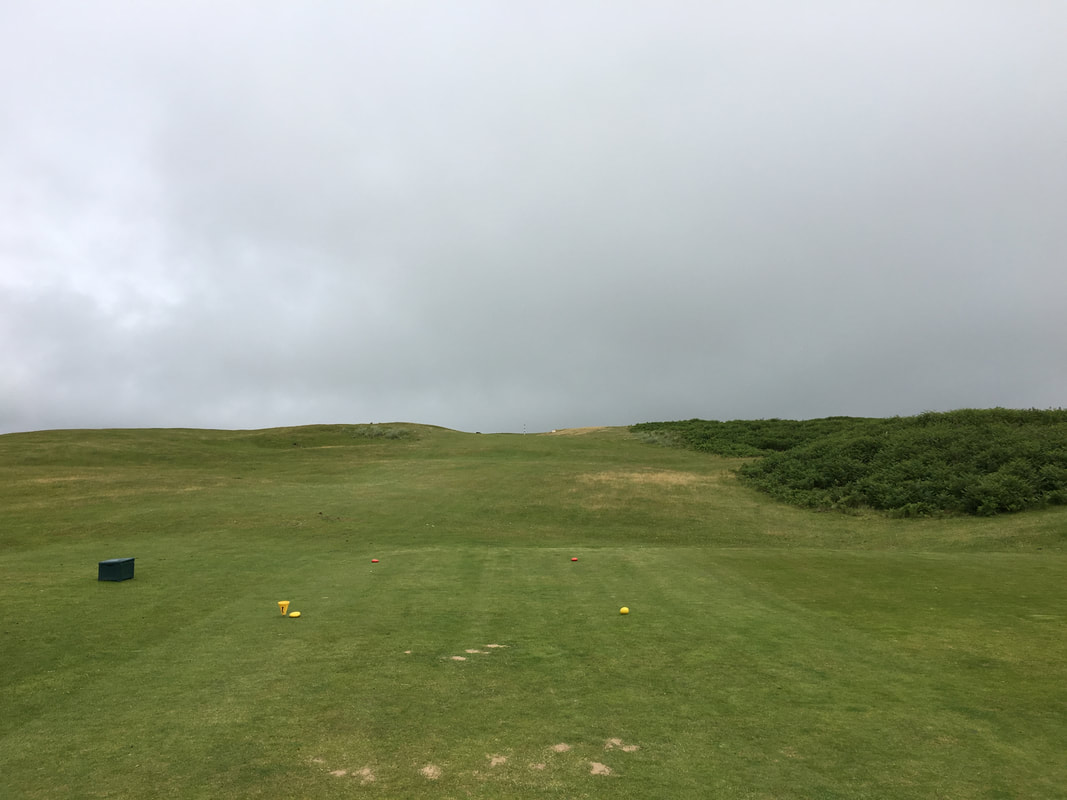
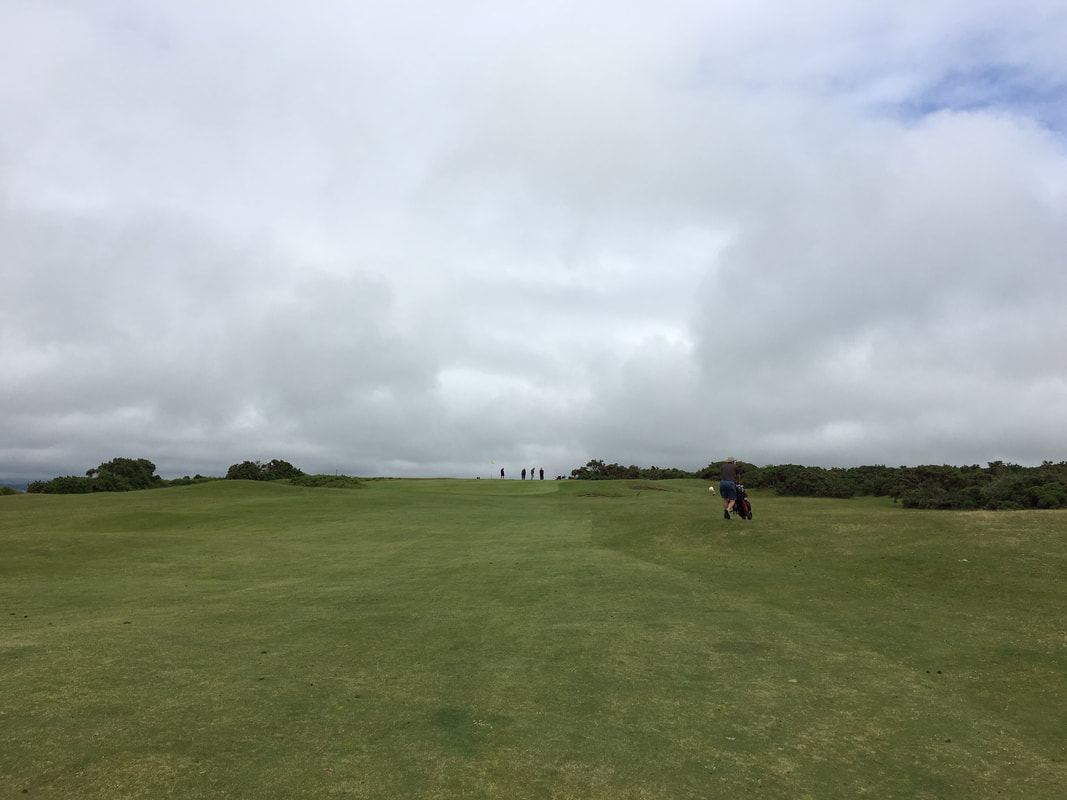
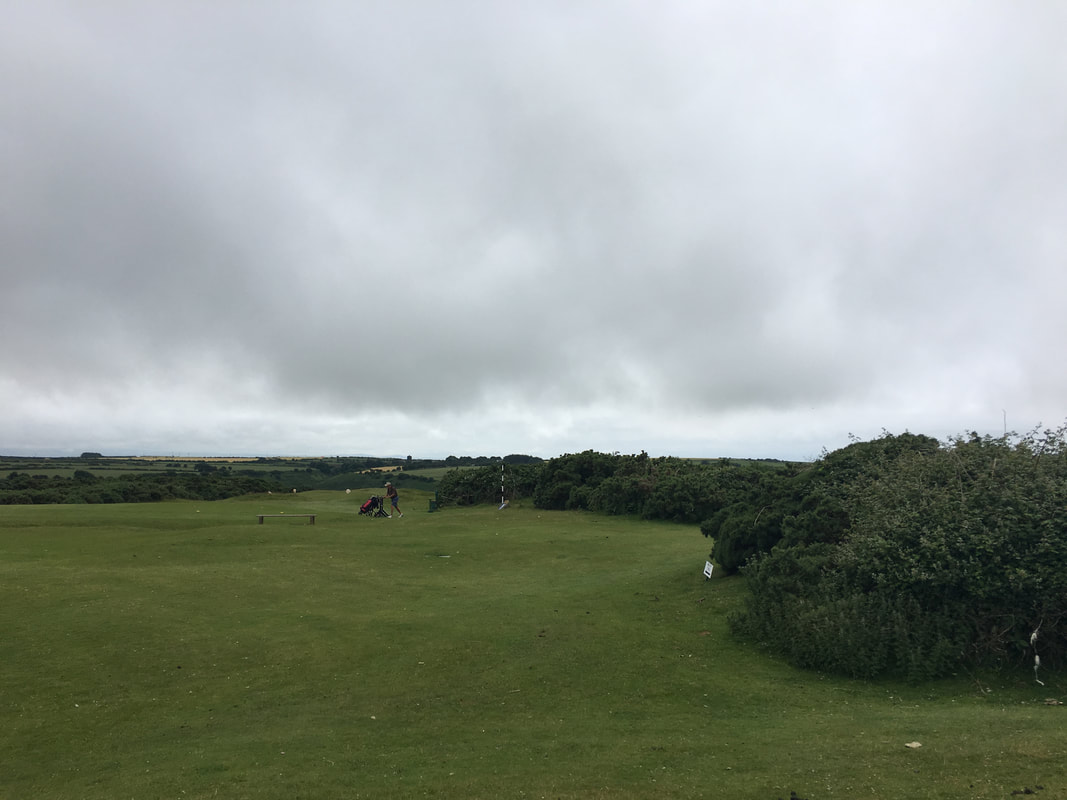
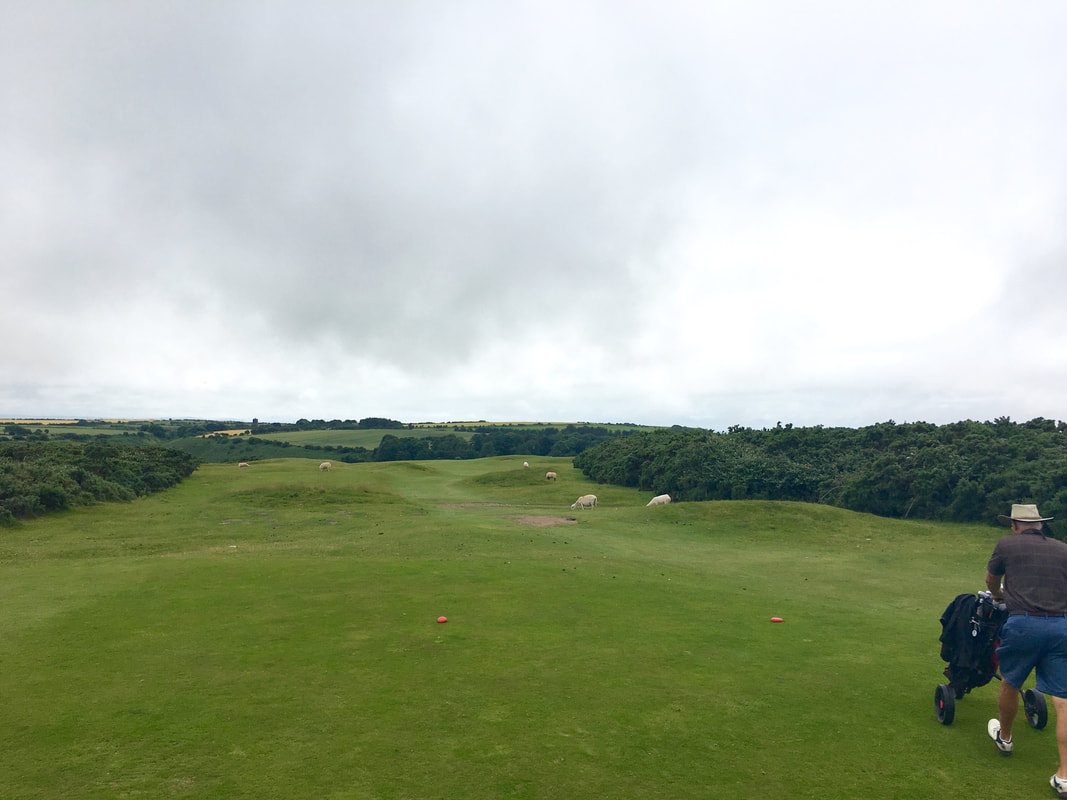
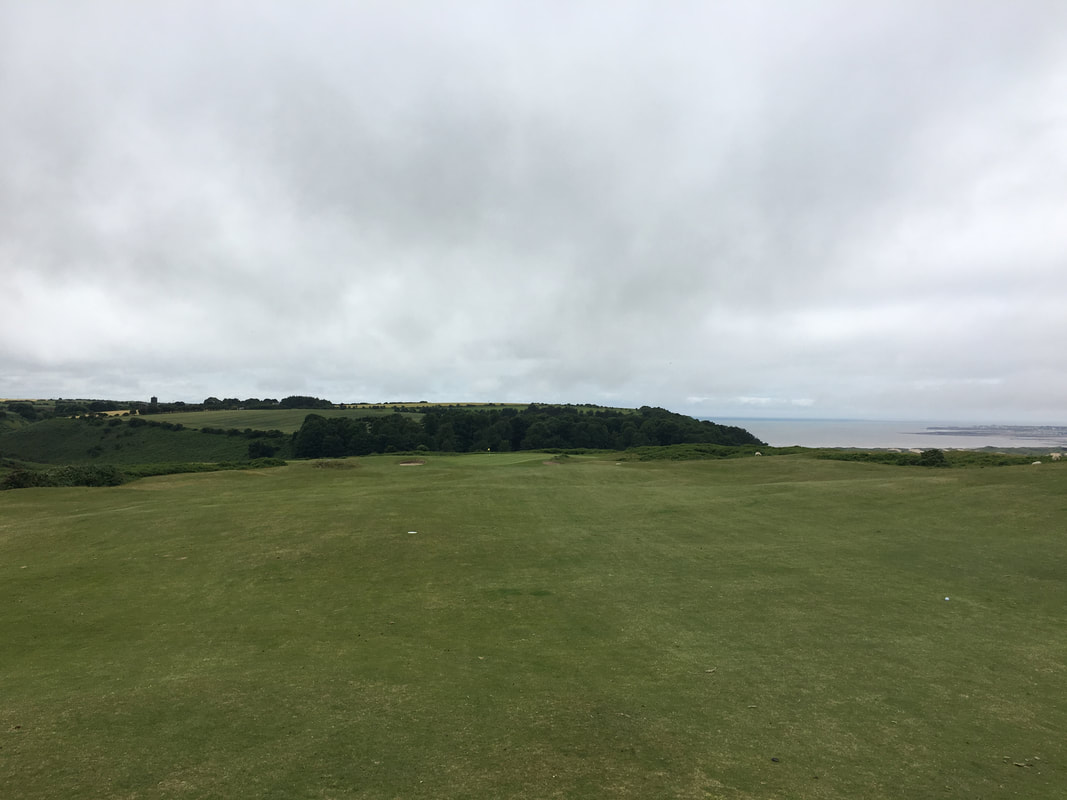
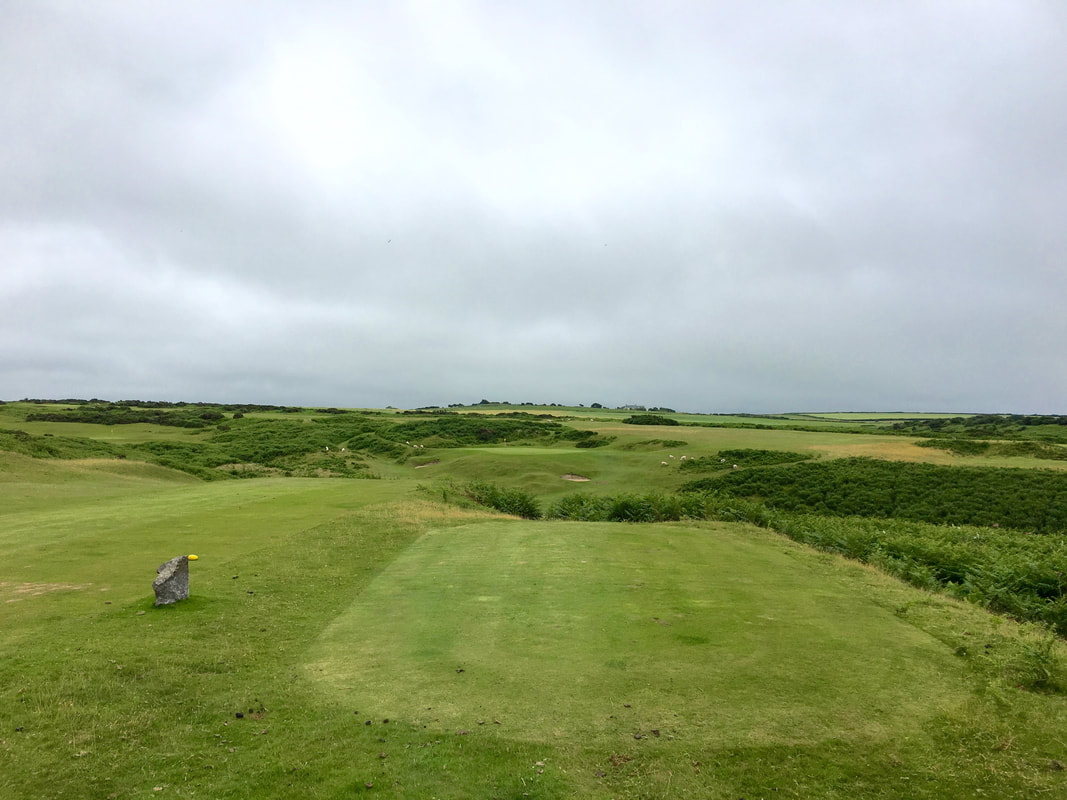
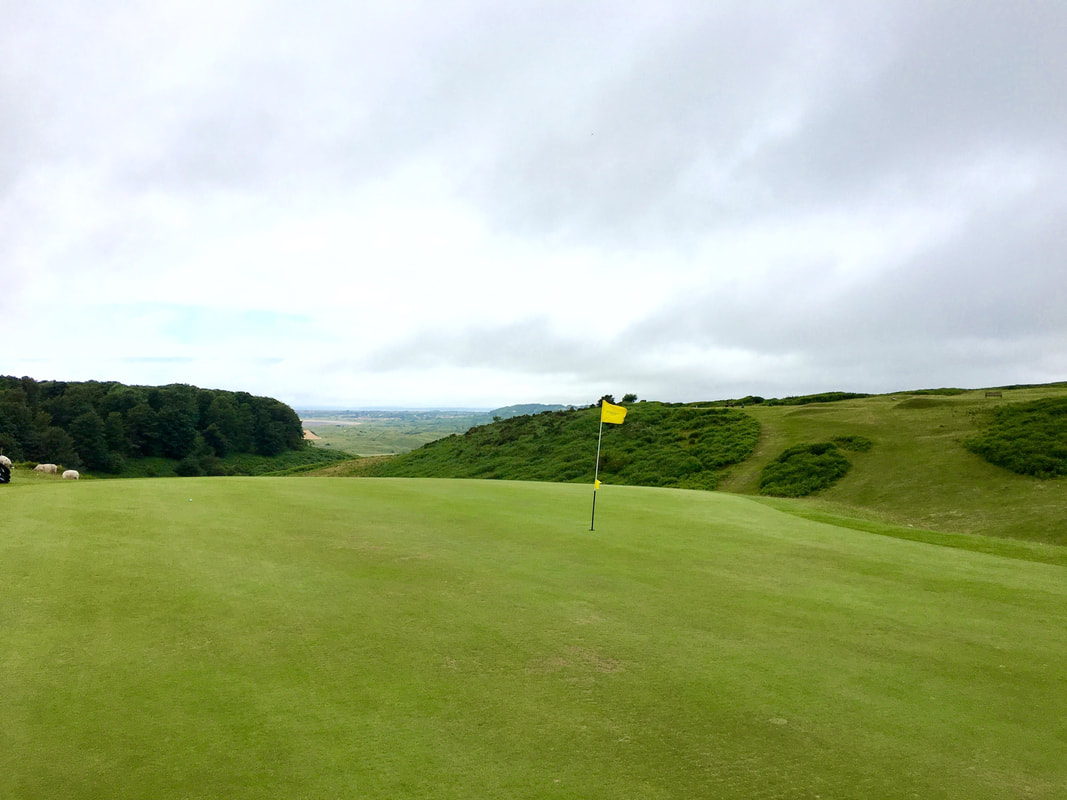
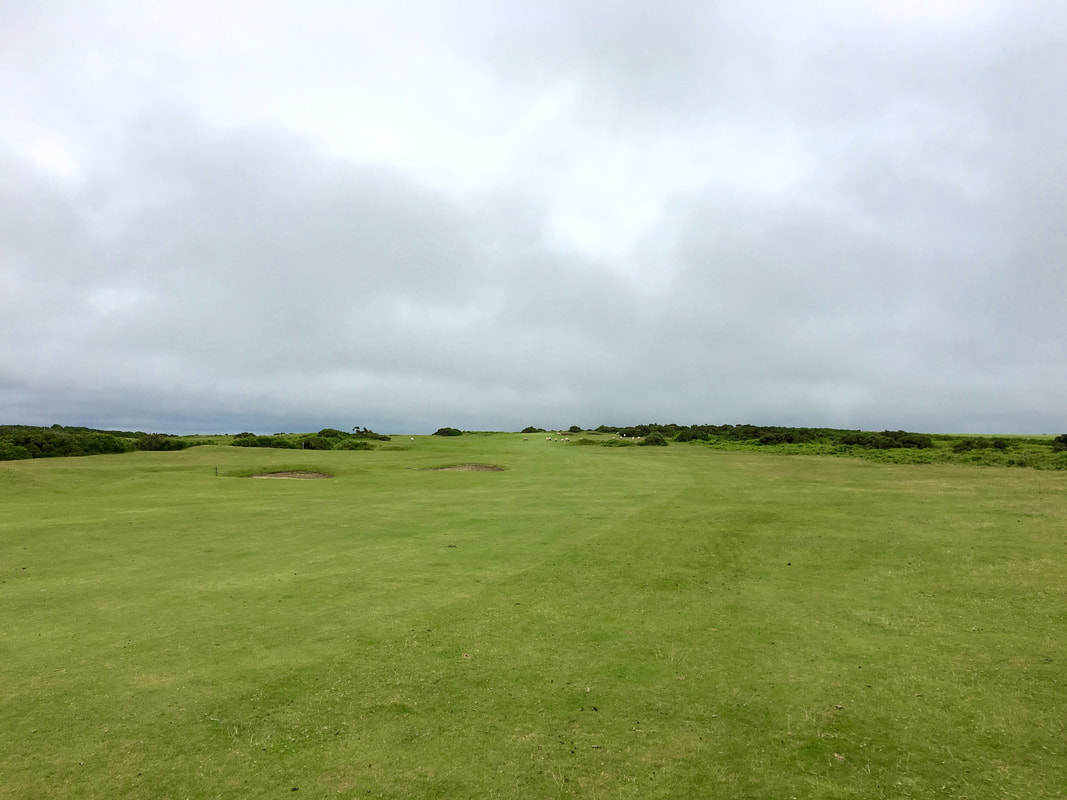
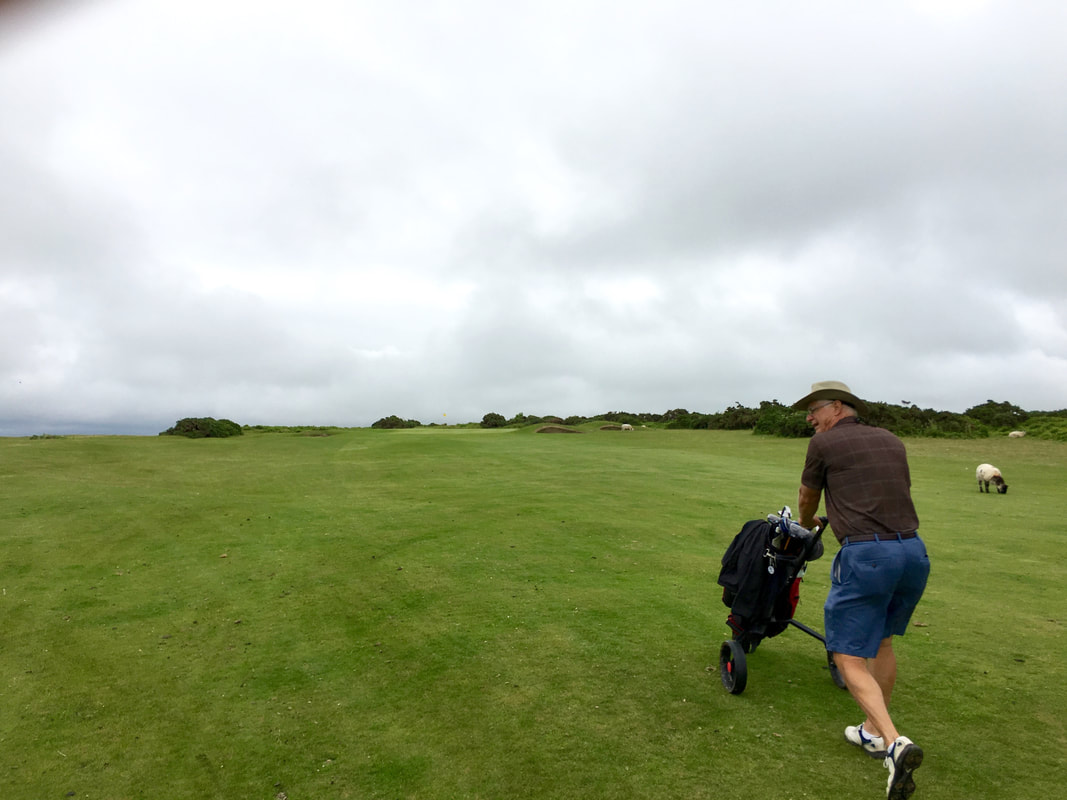
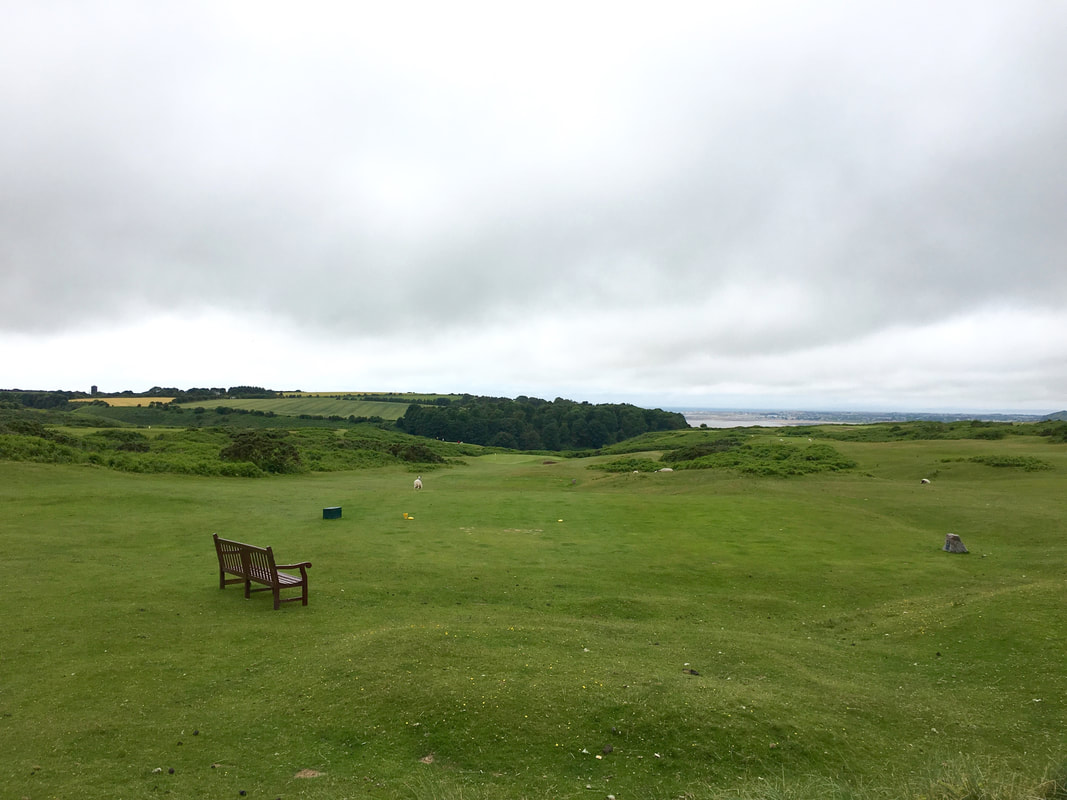
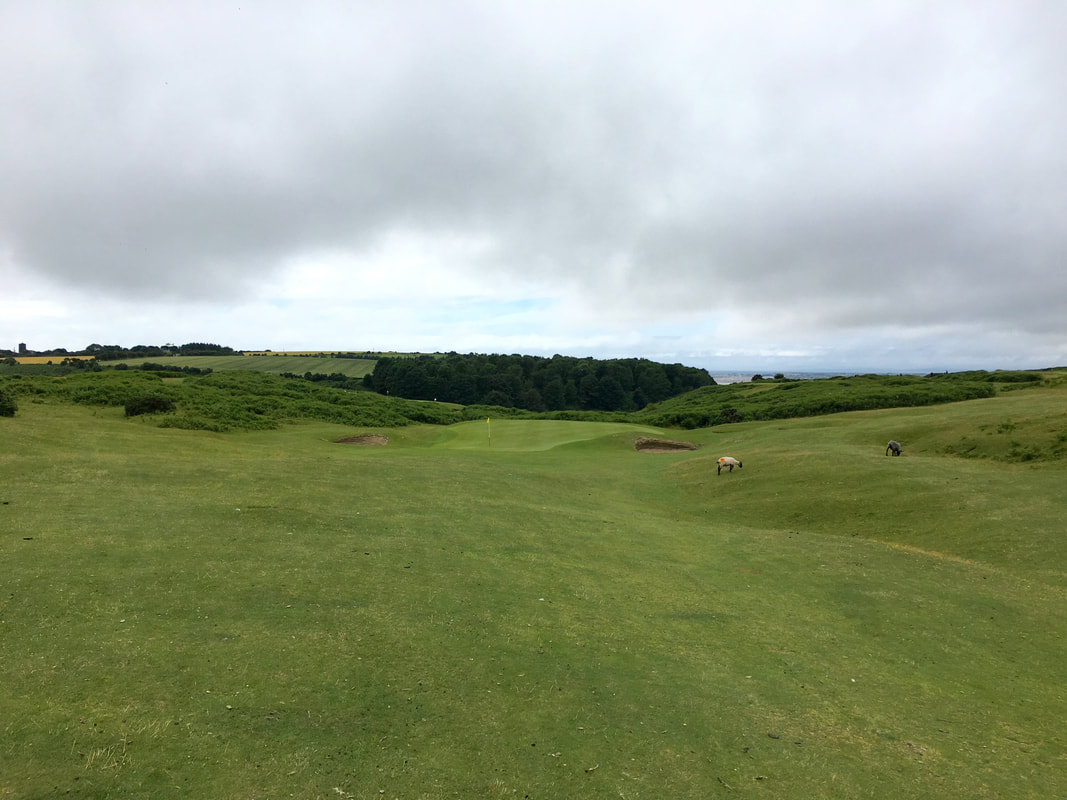
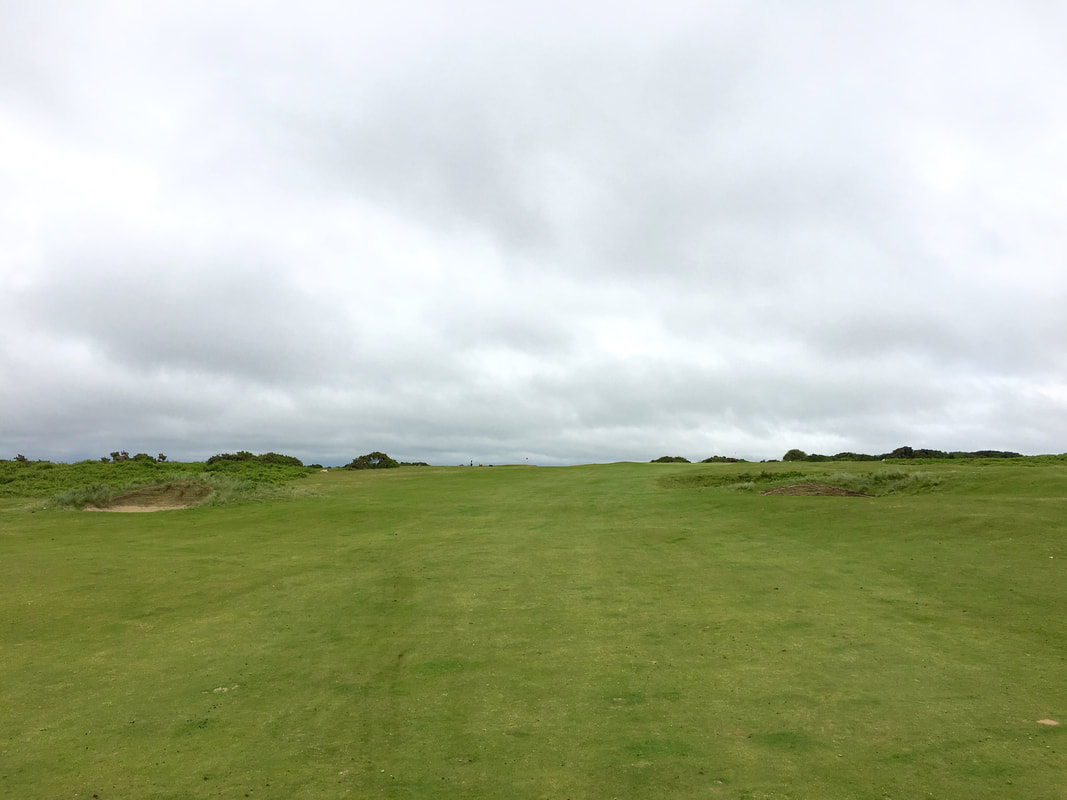
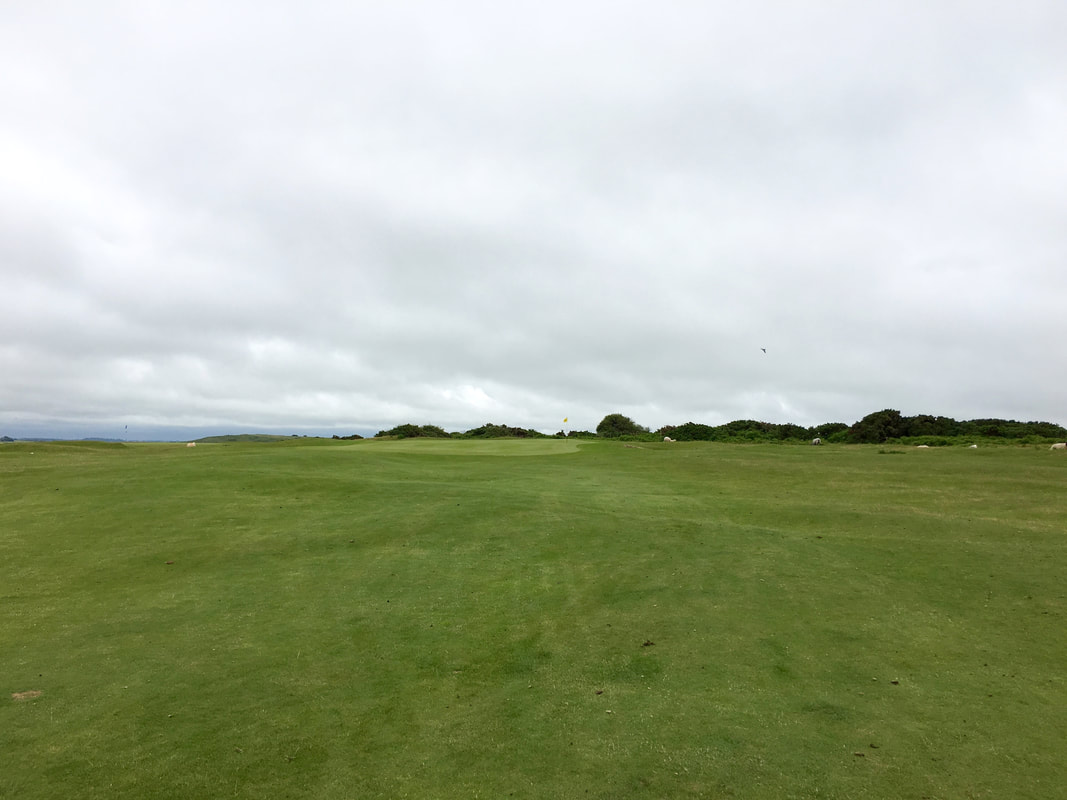
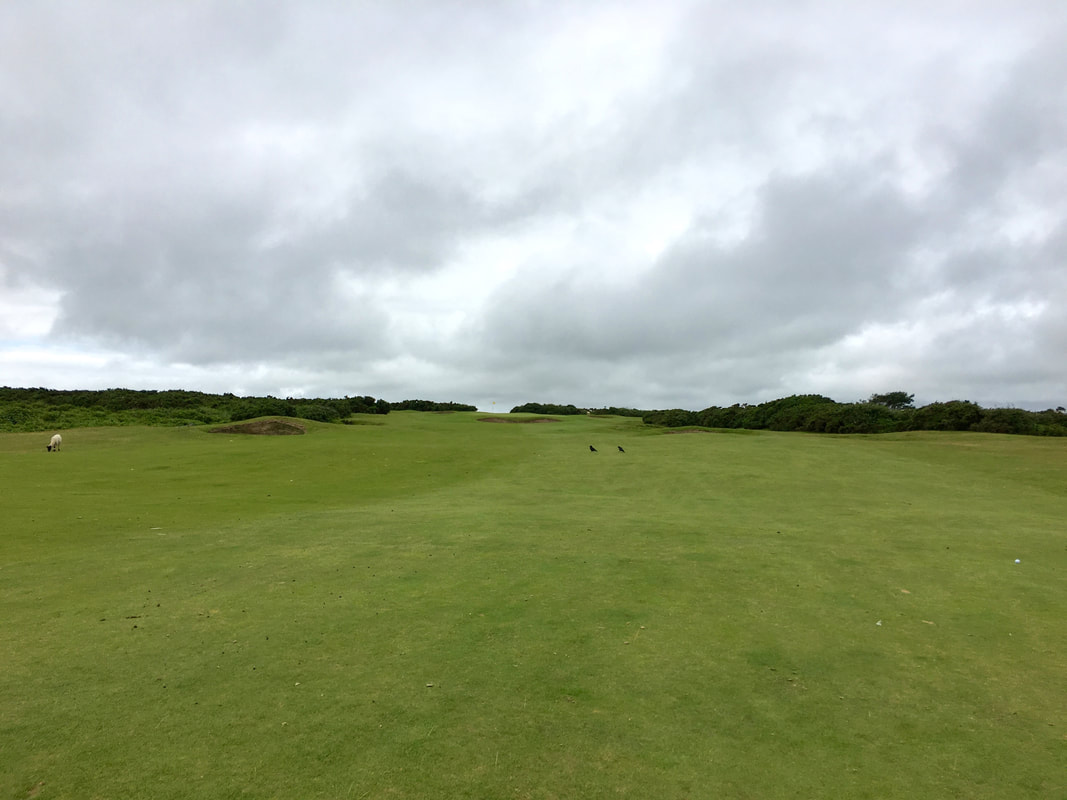
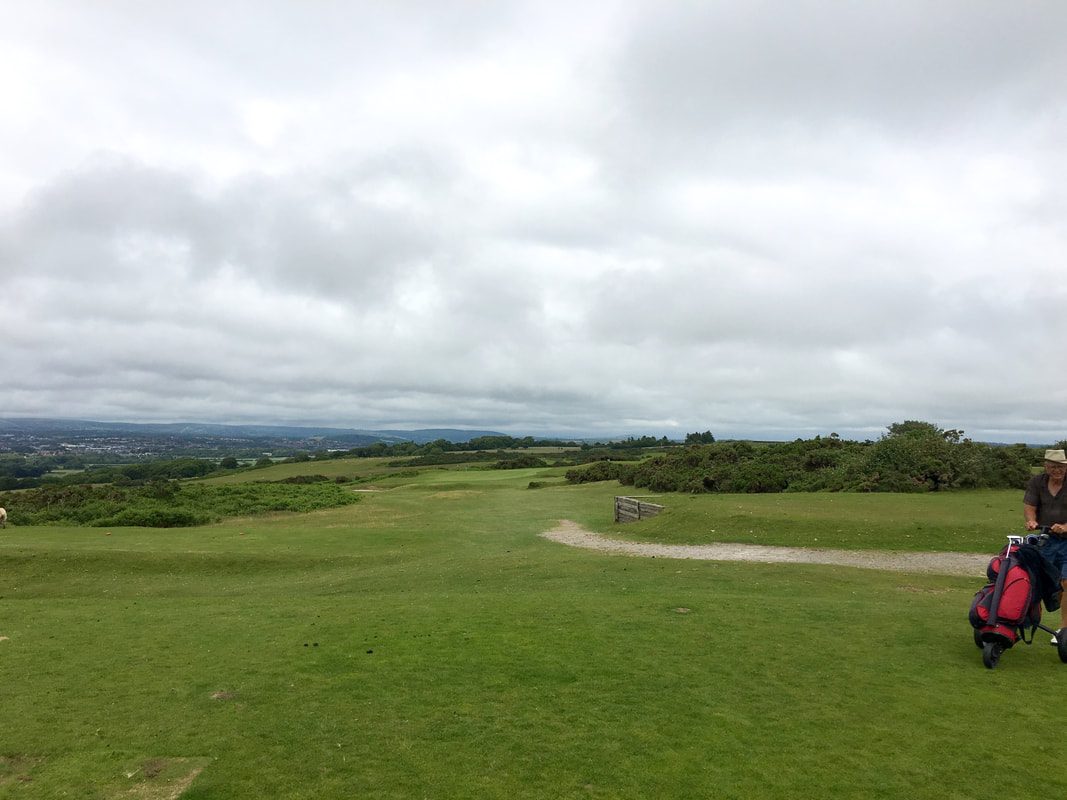
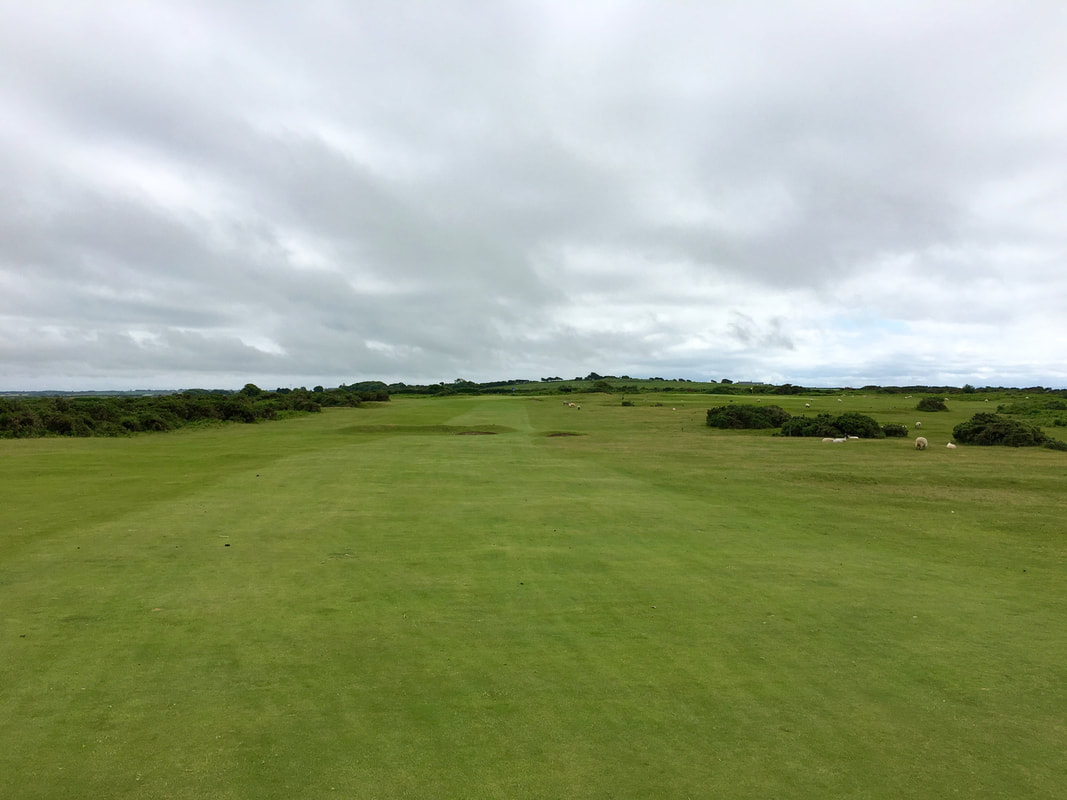
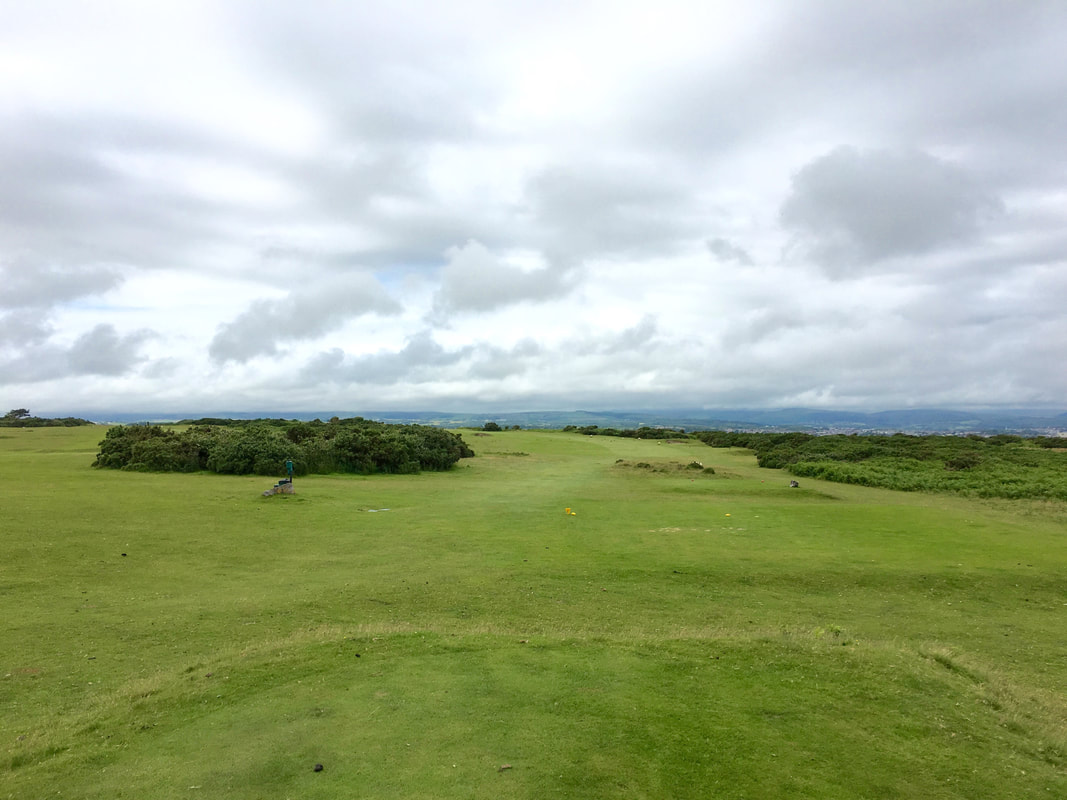
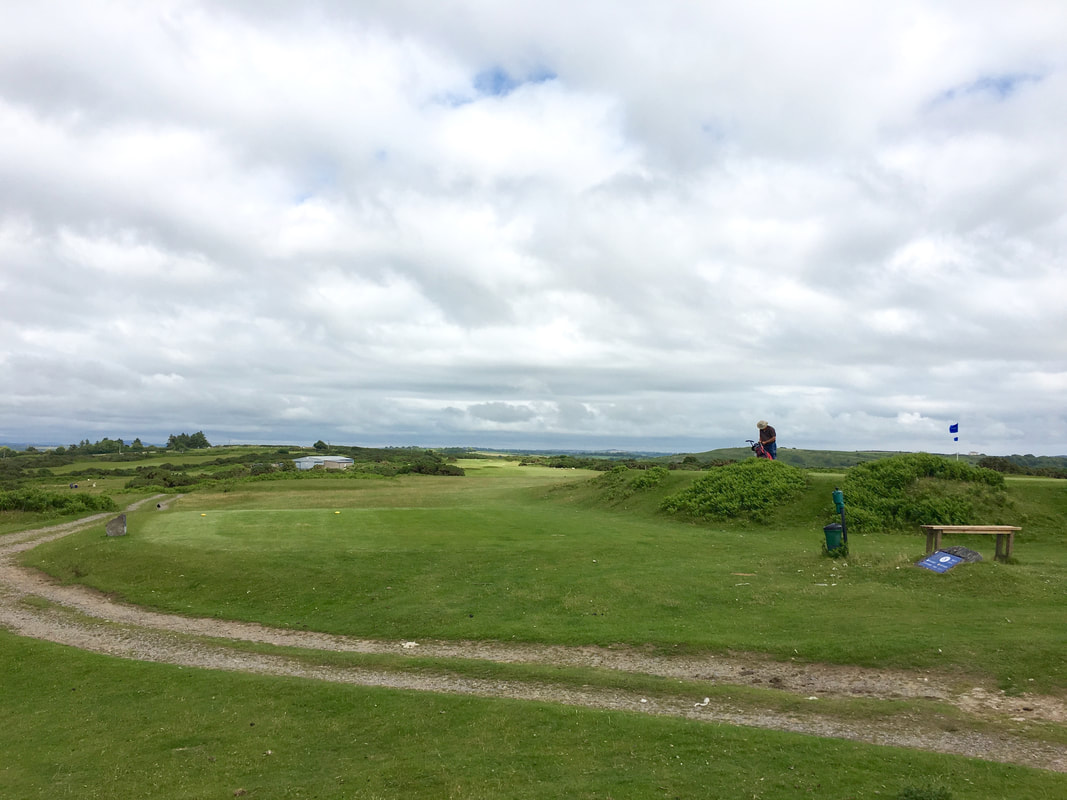
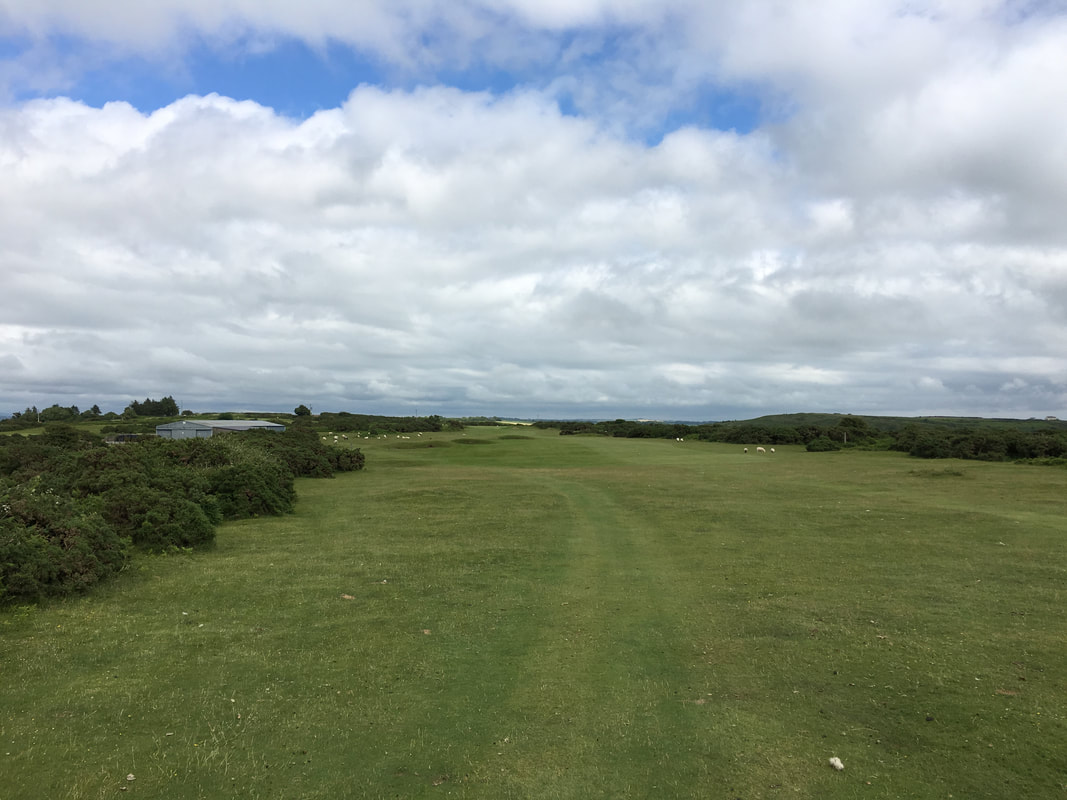
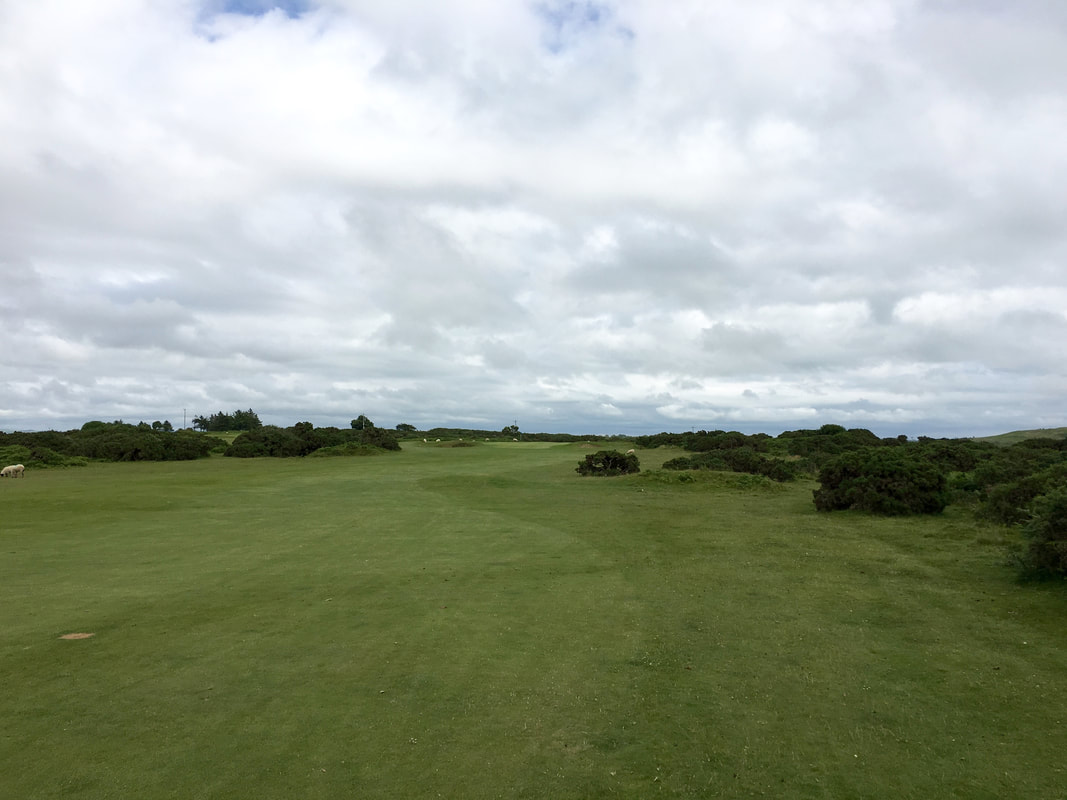
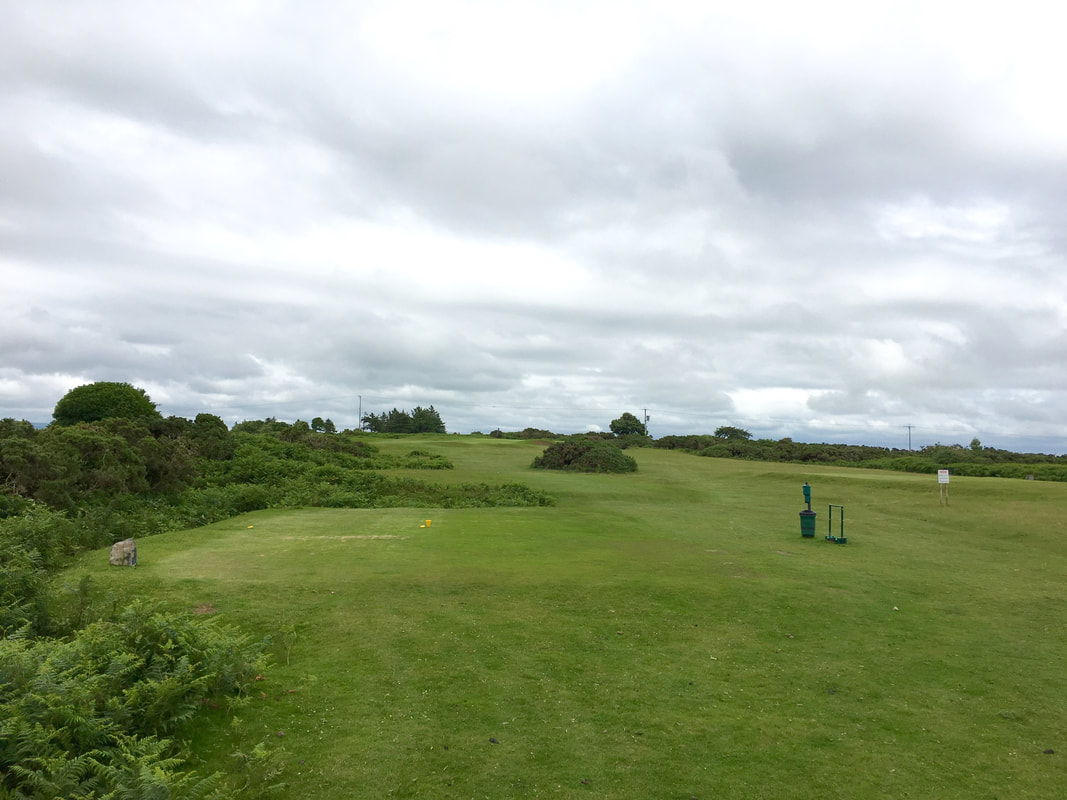
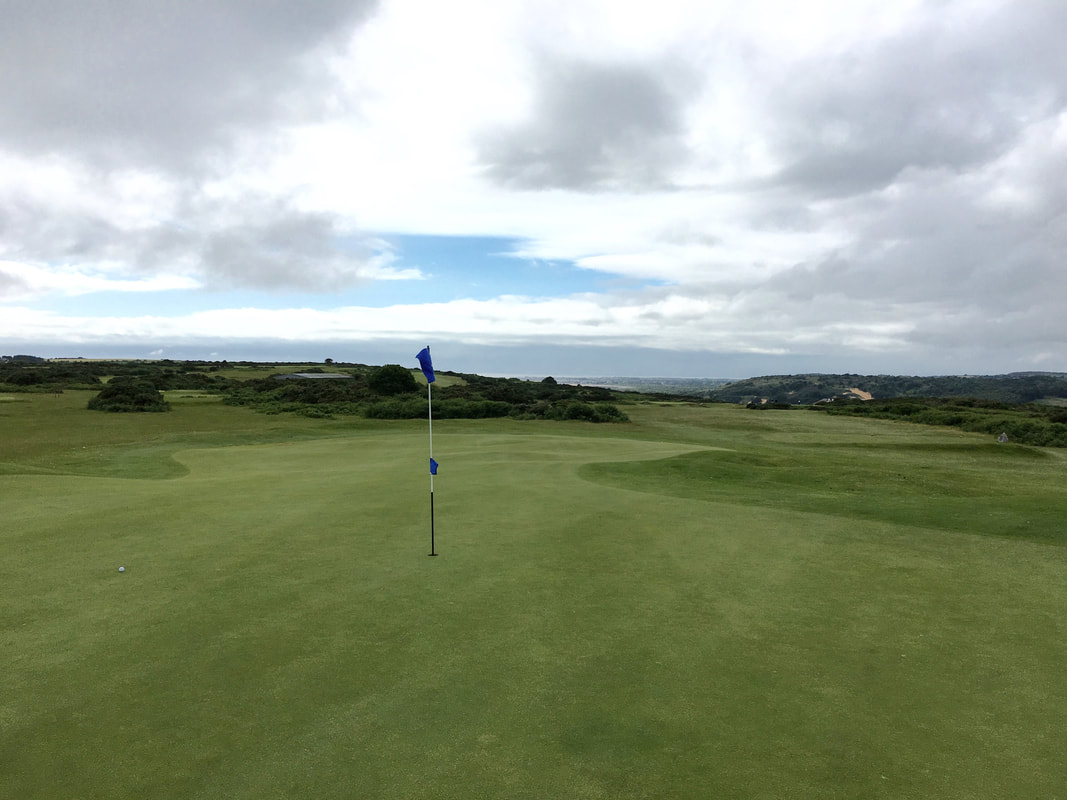
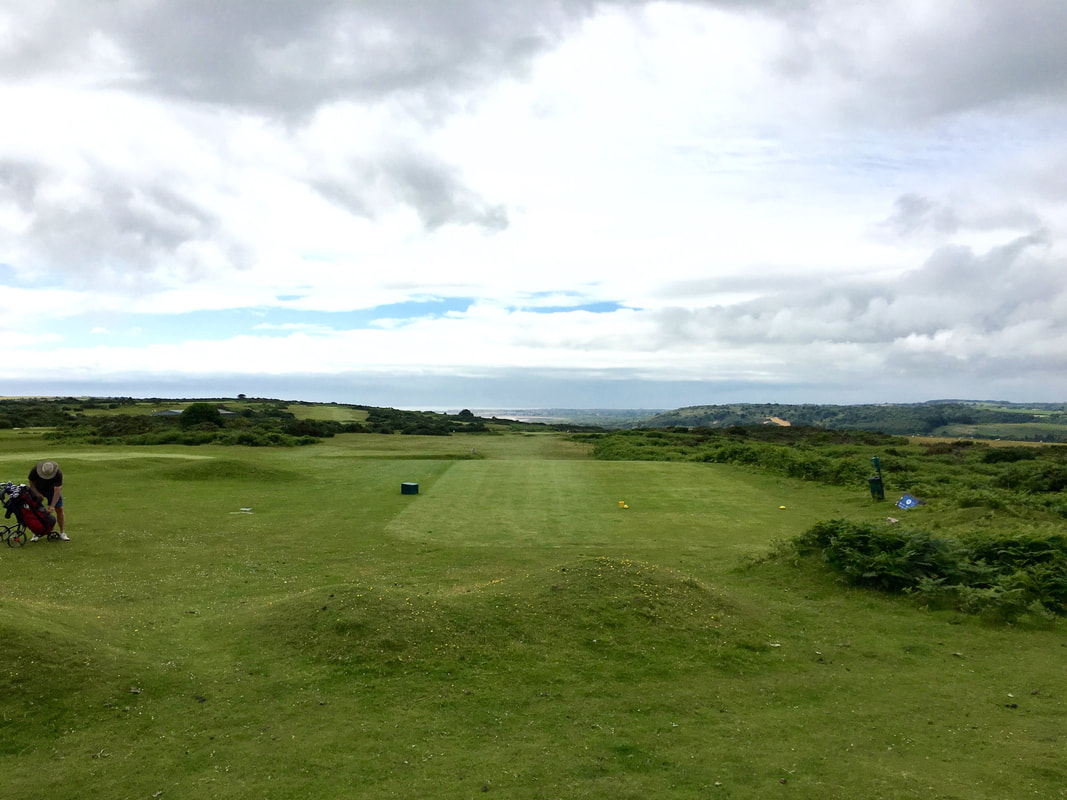
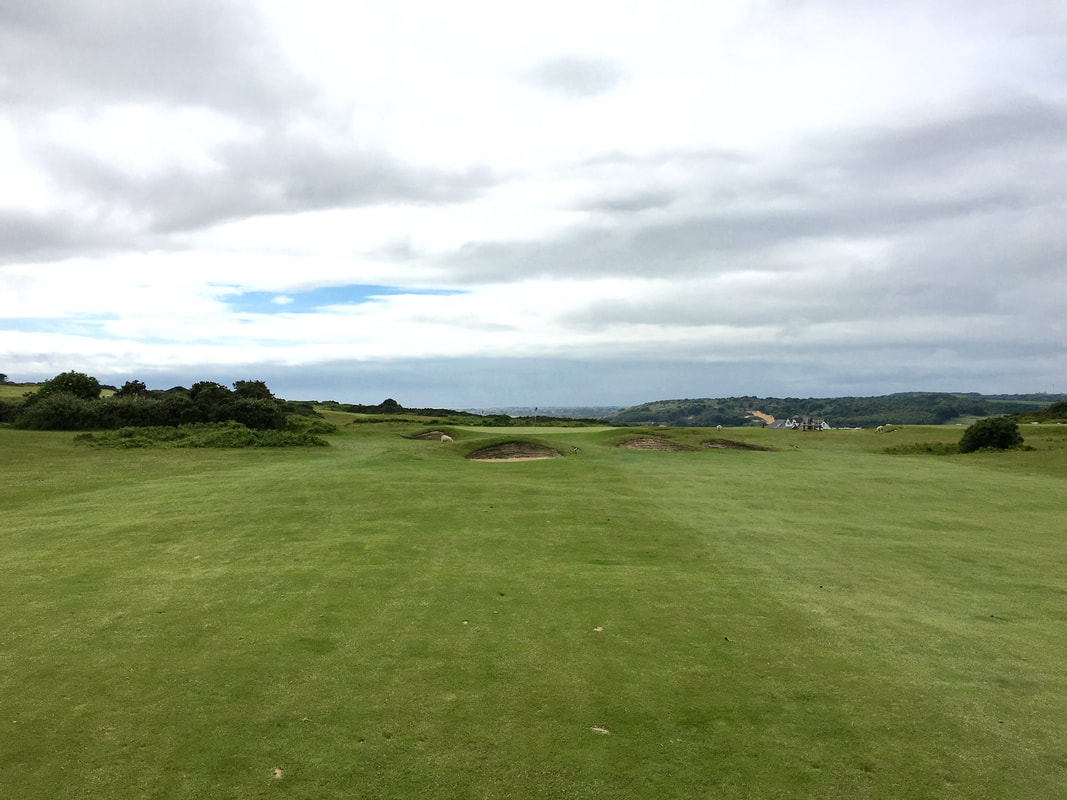

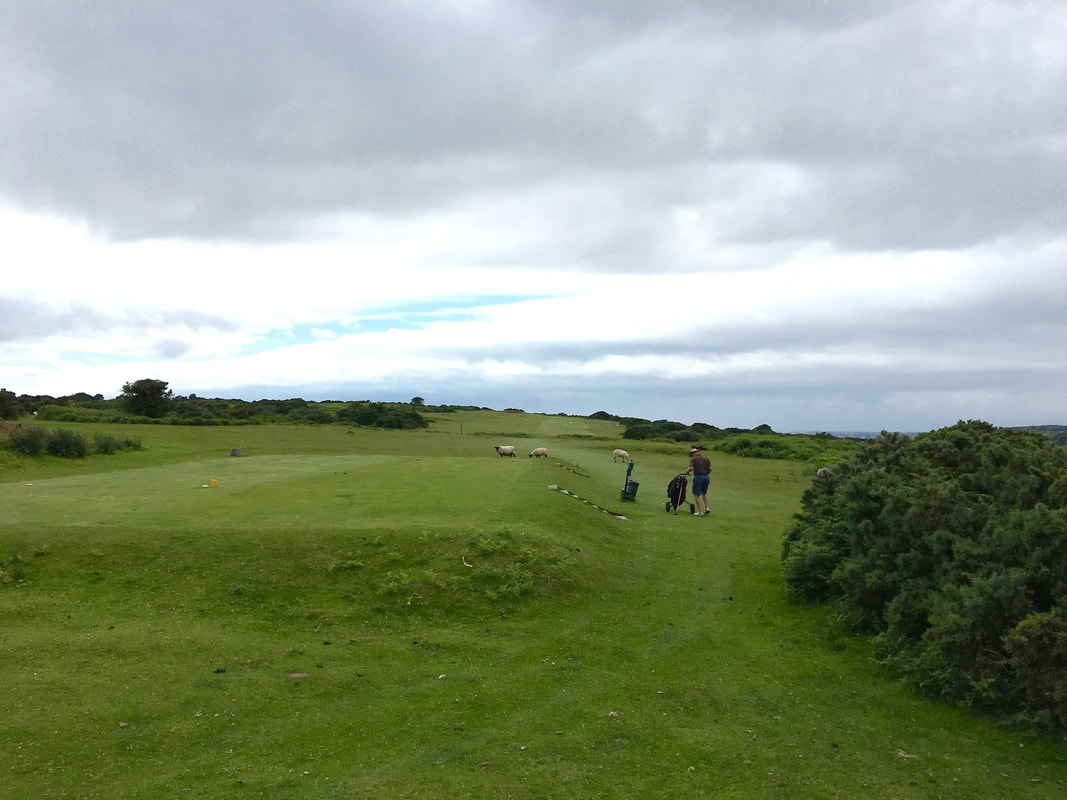
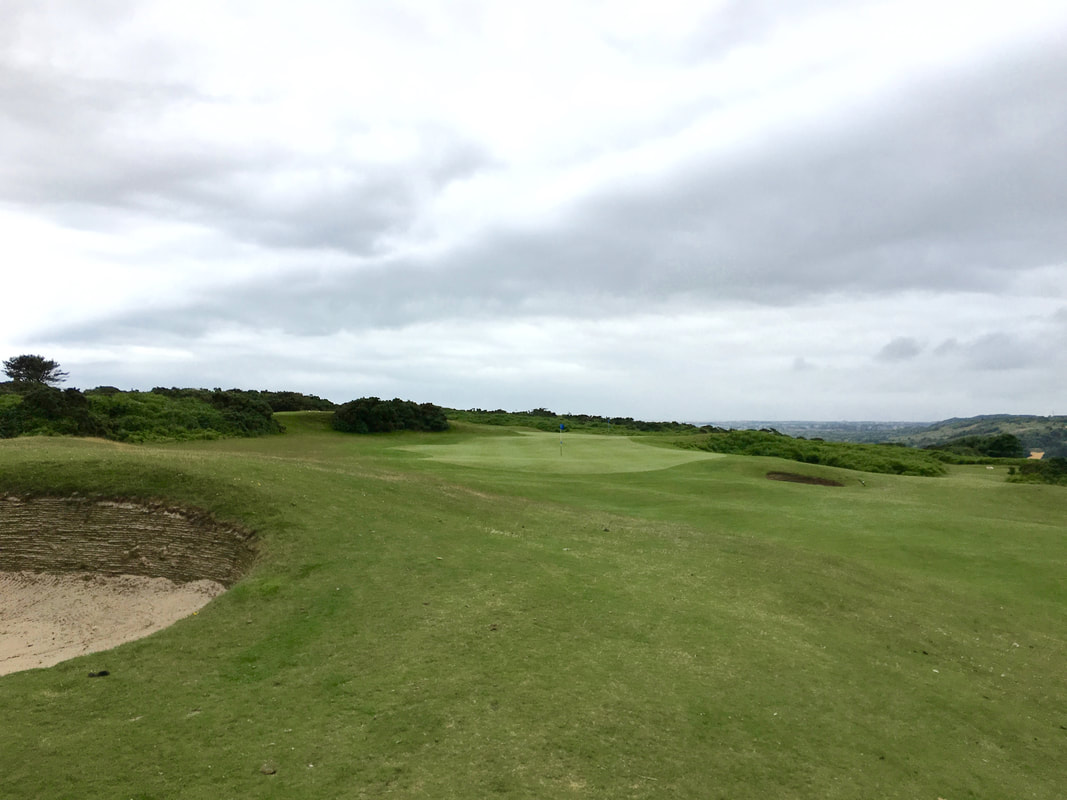
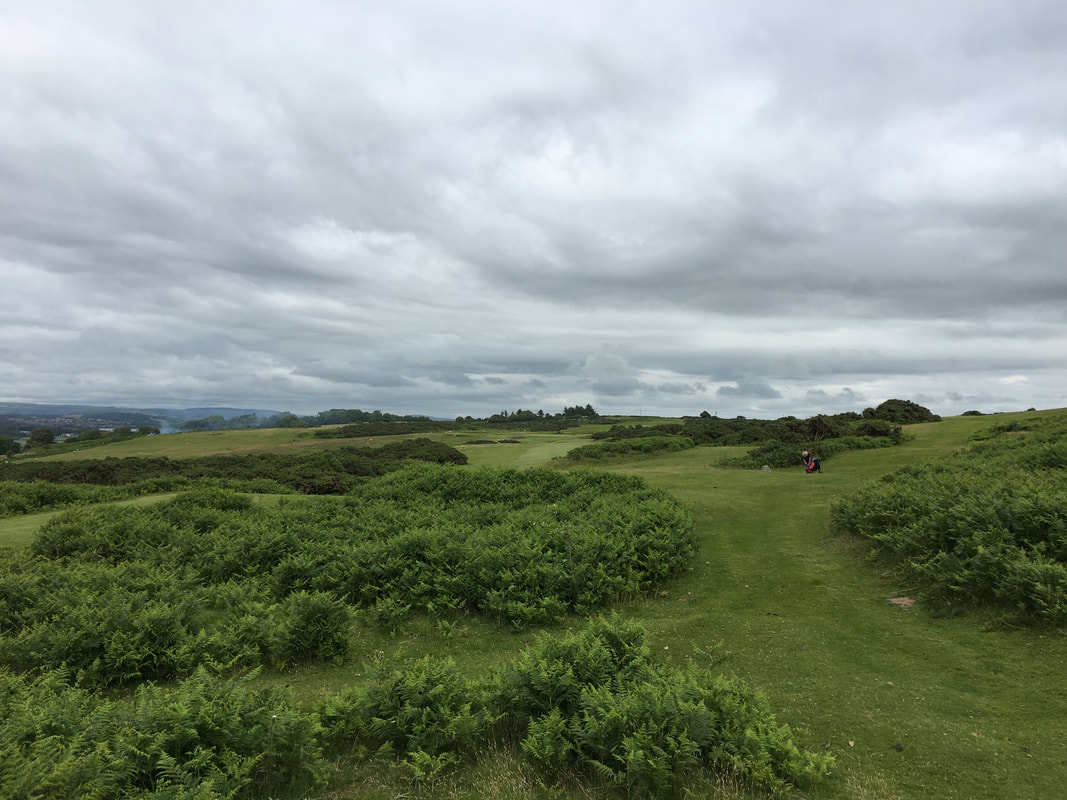
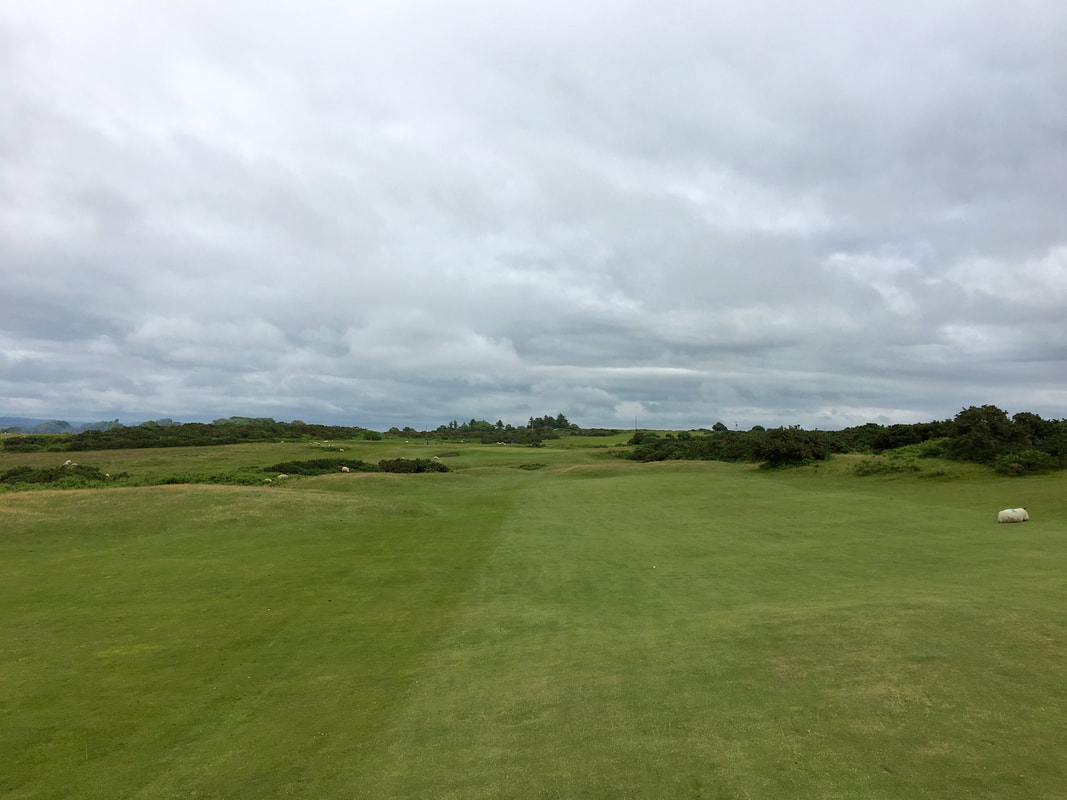
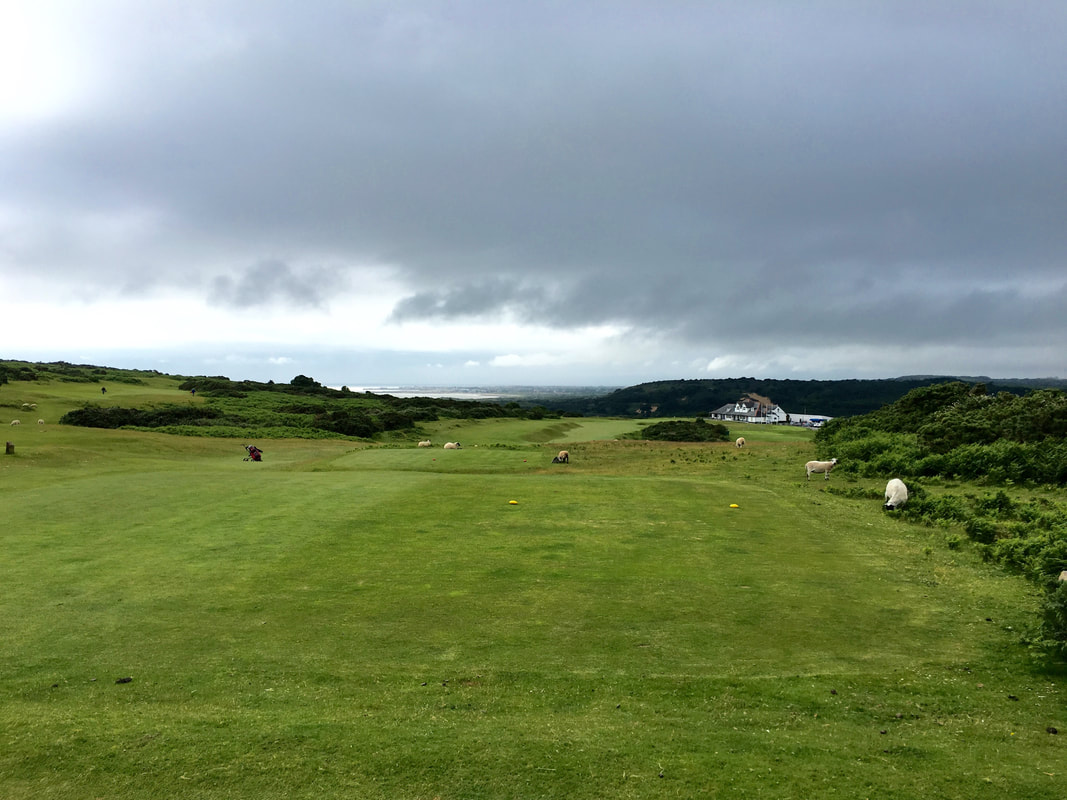
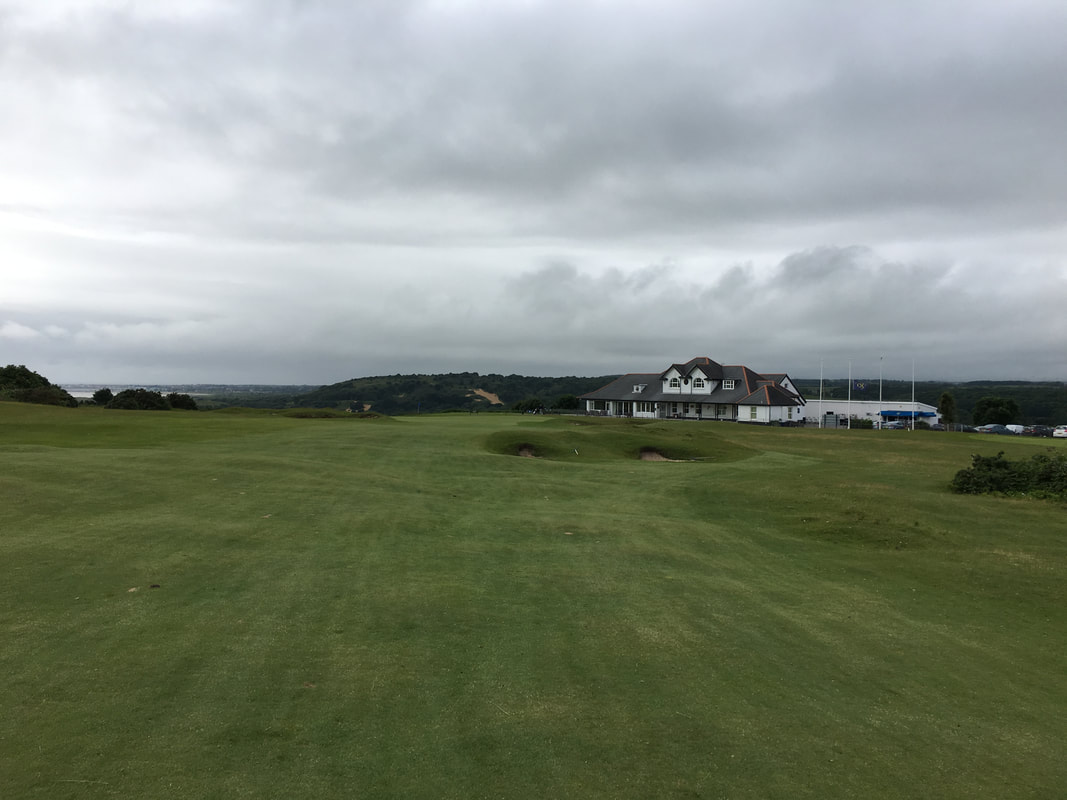
 RSS Feed
RSS Feed